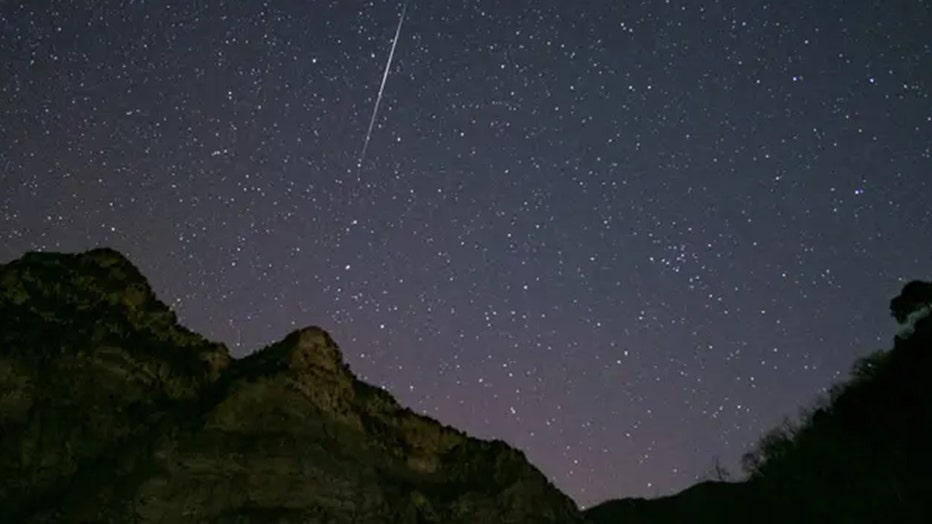Trio of meteor showers to light up night sky in November
Possible meteor streaks across Birmingham night sky
A suspected meteor was seen falling through the sky of Birmingham, England, in the early hours of Saturday, December 30. (Credit: @JohnStew82 via Storyful)
Admirers of space will have a few more reasons to look up next month, as three more meteor showers are expected to reach peak visibility.
The Leonids and Southern and Northern Taurids meteor showers each reach their peaks sometime throughout November.
The Southern Taurids began their activity in late September, according to the American Meteor Society (AMS). This shower will reach its peak on the night of Nov. 4.
The Northern Taurids also reach their peak in November. Overnight on Nov. 11, the Northern Taurids will be the most visible. The two meteor showers overlap in activity from October until December.
HUBBLE TELESCOPE CAPTURES STUNNING IMAGES OF STAR SYSTEM REMINISCENT OF A VOLCANO
The Taurids meteor showers are known for the fireballs they produce, according to NASA.
The Southern and Northern Taurids meteor showers originate from the comet Encke, and the showers happen when Earth interacts with the dust cloud from the Encke comet, the AMS said.

A shooting star of the Geminid meteor shower is pictured on Jan. 3, 2022, in Beijing, China. (Liu Shuangxi/VCG / Getty Images)
The comet Encke is a small comet, according to NASA. It takes Encke about 3.3 years to orbit the Sun.
Starting Nov. 3, the Leonids meteor shower will become active, reaching its peak overnight on Nov. 17 to Nov. 18. The Leonids shower is known as a major meteor shower, according to NASA. This shower radiants around the constellation Leo.
The radiant is the point at which the meteor originates, according to the AMS.
NASA said the Leonids shower is best viewed at about midnight, and you'll want to look away from the meteor shower's radiant to see the longest meteors.
'Swarm of Meteors' spotted over Northwest Kansas
The National Weather Service’s (NWS) office in Goodland, Kansas, captured a "small swarm of meteors" during the early hours of Sunday, February 19. (Credit: NWS Goodland via Storyful)
According to NASA, the Leonids are some of the fastest meteors, and they travel at about 44 miles per second. The Leonids can also be colorful, NASA said.
The Leonids stem from the Comet Tempel-Tuttle. The comet got its name from its two independent discoveries by Ernst Tempel and Horace Tuttle, NASA said. It takes Comet Temel-Tuttle 33 years to orbit the Sun once.
If three meteor showers weren't enough for November, activity from the Geminids meteor shower begins Nov. 19. This meteor shower won't reach its peak until mid-December, but the Geminids shower is considered by NASA to be one of the best annual meteor showers.
Find more updates on this story at FOXWeather.com.

